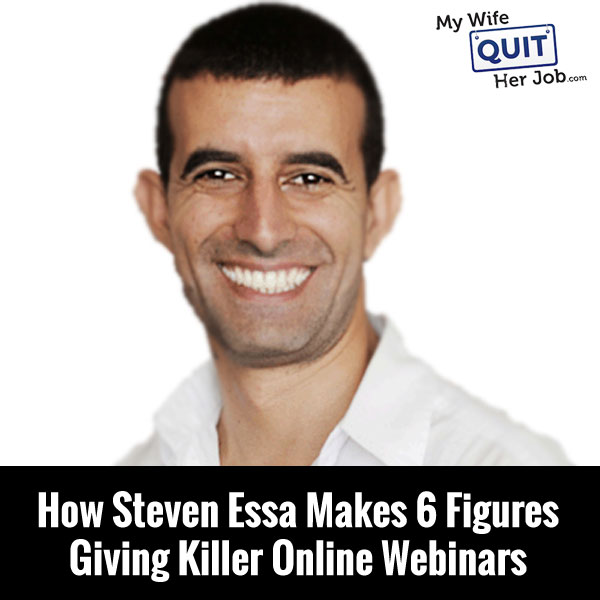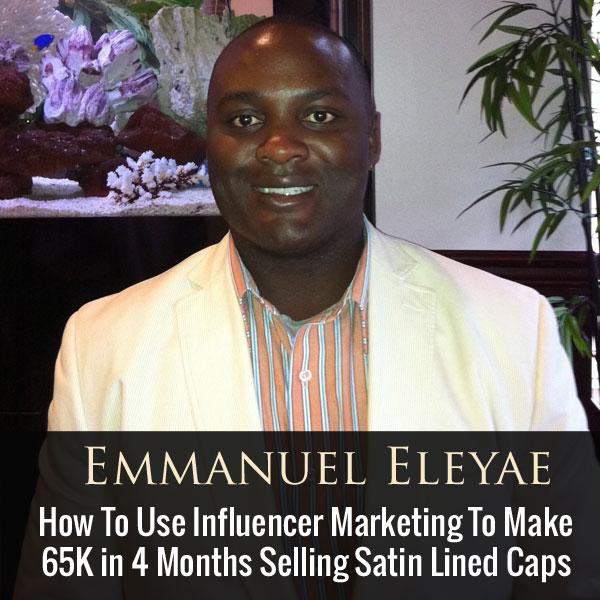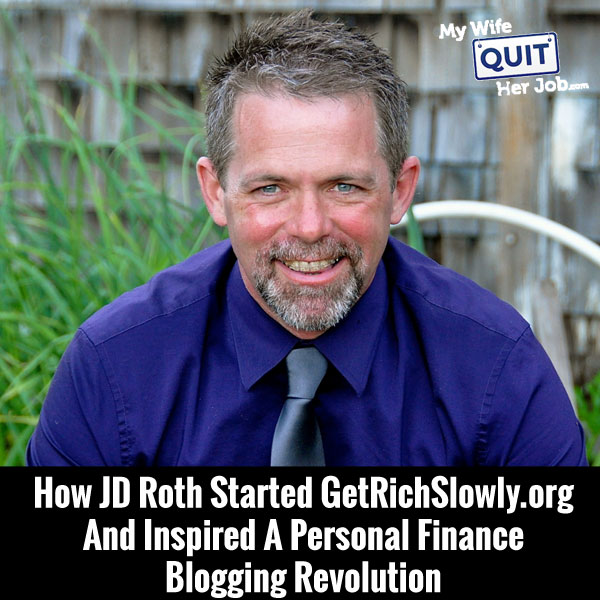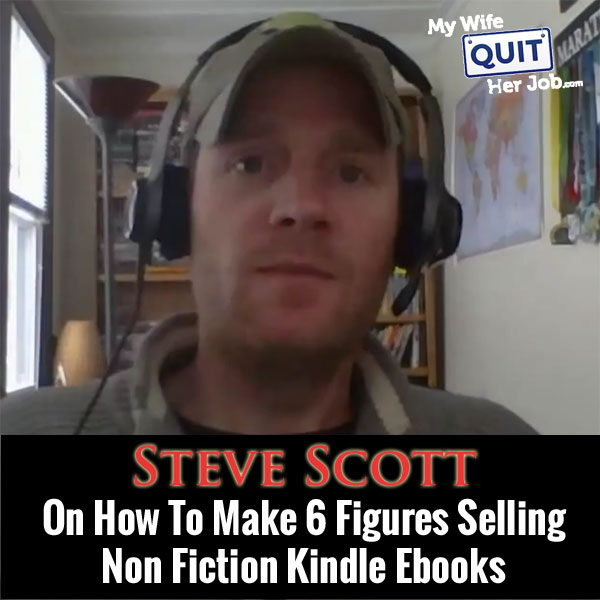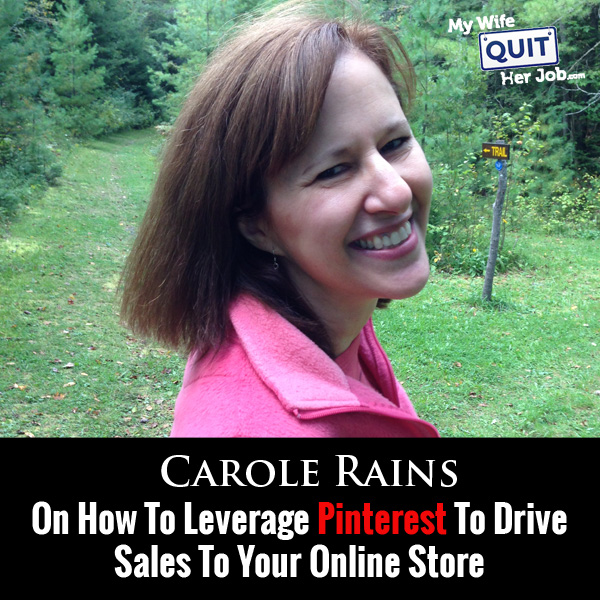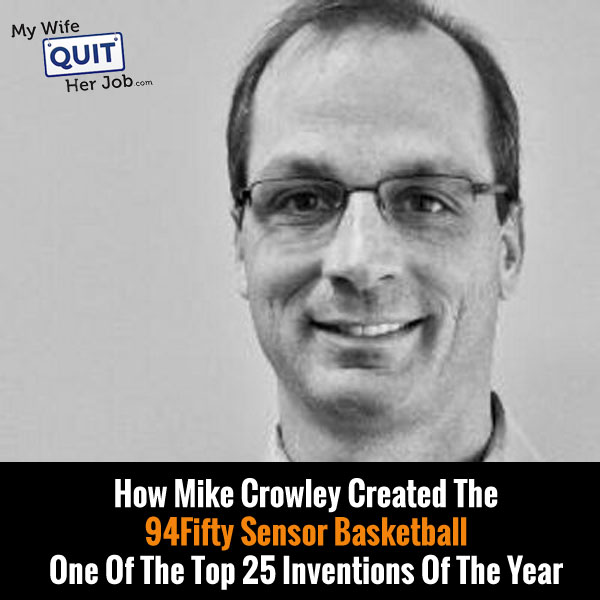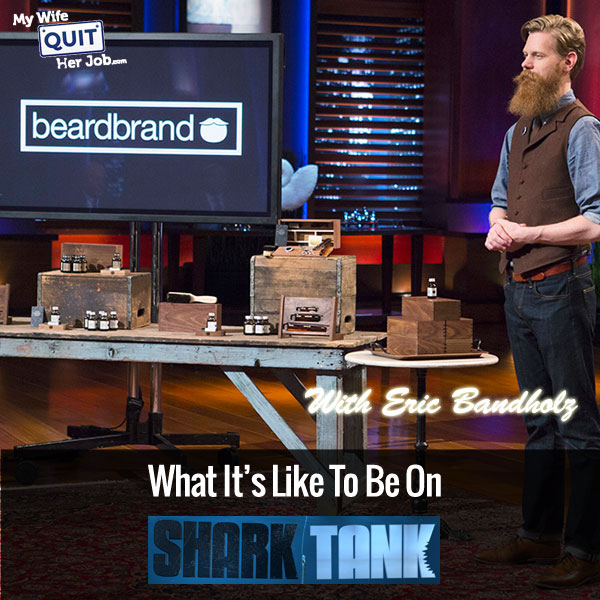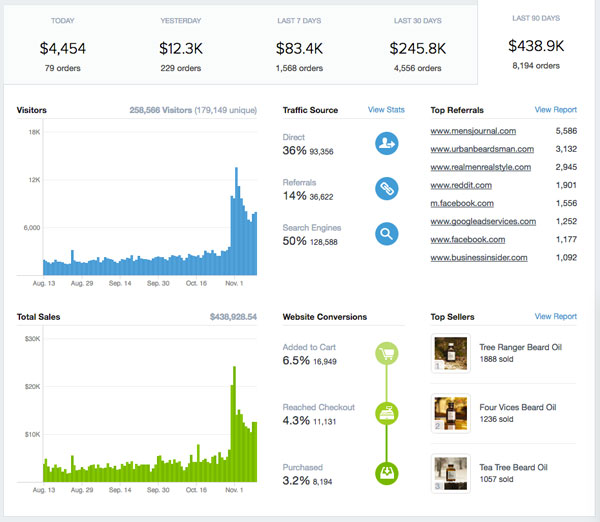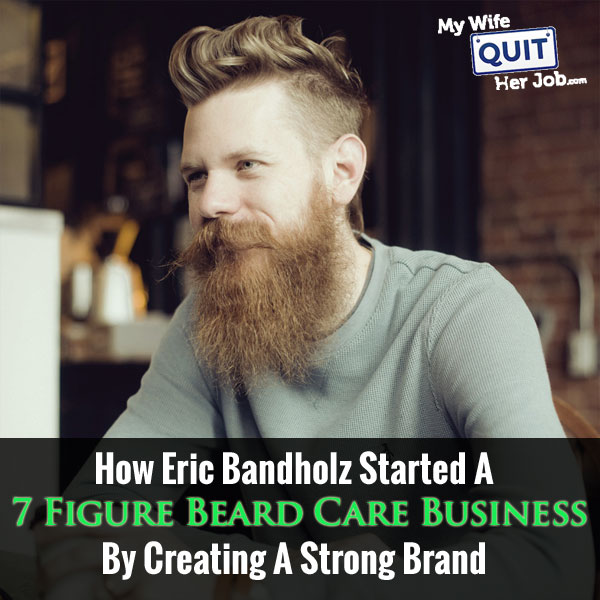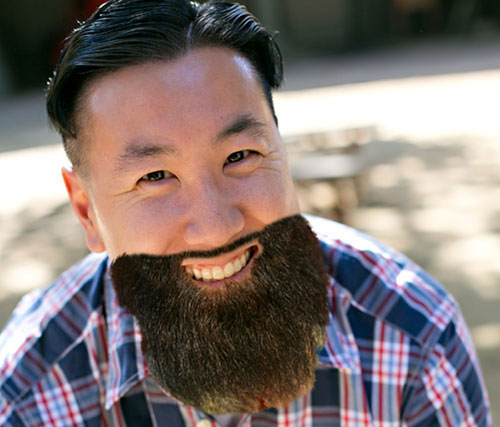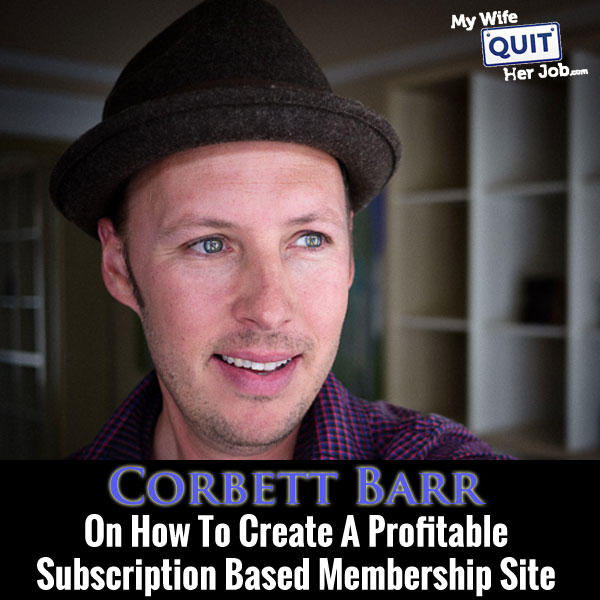Podcast: Download (Duration: 42:36 — 58.8MB)
I became a huge fan of Will Mitchell when I accidentally stumbled on his blog, StartupBros.com. Not only is Will an excellent writer but he always writes from experience which is quite rare when it comes to the Internet.
In this episode, Will teaches us how to find products to sell online and how he has created an incredible business importing goods from Asia and teaching others how to do the same. Enjoy the podcast!
What You’ll Learn
- How Will got started in ecommerce
- What Will sells in his ecommerce store
- Will’s techniques for finding the right product to sell
- What margins Will likes to see on his products
- What tools Will uses to find products to sell
- How to import goods from China
- How to get around high MOQs
- How to distinguish good sellers from bad sellers on Alibaba
Other Resources And Books
Transcript
Now if you enjoy this podcast please leave me a review on iTunes, and enter my podcast contest where I’m giving away free one on one business consults every single month. For more information, go to www.mywifequitherjob.com/contest. And if you are interested in starting your own online business, be sure to sign up for my free six day mini course where I show you how my wife and I managed to make over 100k in profit in our first year of business. Go to www.mywifequitherjob.com for more information, now onto the show.
Welcome to the My Wife Quit her Job podcast. We will teach you how to create a business that suits your lifestyle so you can spend more time with your family and focus on doing the things that you love. Here is your host Steve Chou.
Steve: Welcome to the My Wife Quit her Job podcast. Today I’ve got someone really special on the show, Will Mitchell. Now let’s see, how did I come across Will? First off, I’ve never really met the guy in person, but I kind of feel like I know from his blog Startupbros.com. Now if you’ve never been Startupbros.com, I highly recommend that you check it out. Every single post is just so detailed and well written that I have been guilty of spending hours reading it when I should have been working on my businesses.
Now unlike me, Will started his entrepreneurship journey at a very young age. He actually started importing and selling online at age 16, then he dropped out of college at age 19 to help start Affluence which is a social network for affluent people, and after this company went public, he started a successful consulting firm and today Will focuses his time on Startupbros.com, and I believe he also leads people on tours to the Canton Fair. So with that, welcome to the show Will. How is it going man?
Will: Pretty good Steve. Good to be here, thanks for having me.
Steve: Yeah. You’re a hard man to track down.
Will: Yes. Finally here though.
Steve: So how did you get into eCommerce and what happened at age 16 that made you try to import goods from China?
Will: You know, when I was really young, you know, as young as 12 or 13, my parents had me really young and my dad was just a hardcore entrepreneur, did some amazing things. So I kind of got a back seat to watch all of what he did and through that from a really young age I decided that I probably wasn’t going to go to college. So I pretty much decided that school in general– I didn’t really see how it connected to the entrepreneurial journey, and I didn’t see how people that were really dedicated to the education system got further in the entrepreneurial world.
So I kind of decided from a young age that I was going to use entrepreneurship and trial and error as my schooling sort of thing. So the first business I got into was– and this was 13, 14 years old, I started doing counterfeits and things like that.
Steve: What does that mean?
Will: So counterfeits purses and counterfeit wallets.
Steve: Oh okay. Got it, okay.
Will: All the fake Gucci and Chanel stuff you see.
Steve: Right.
Will: So that’s actually how I started off. So it gave me a good footing and everything but obviously it was a little risky, but that’s actually how I got started off. So I started selling those on eBay, Amazon. Back then it was a little bit lucid than it is now, they are not as strict. So made some good money doing that for a good two years until I got a cease and desist from– you know, I started getting them from pretty much everyone: Nike, Burberry and Gucci. So luckily for me I respected the cease and desist, didn’t get sued or anything, but kind of took all the profits that I had from the counterfeits. That’s funny, I actually I still have like a box of a whole bunch of fake Chanel purses and Gucci purses and stuff in my garage.
I kind of took to the– what I learned from that and profits from that and I started trying to go legit with it, so tons and tons of failed products before I really figured out what I was doing. And back then– this is 2002, 2003, early 2000. So it’s still pretty almost like the Wild Wild West of the internet. There were a lot of scams out there; doing business on Alibaba, doing international business in general was really quite risky. So I did make a lot of mistakes, I got scammed quite a few times. I’ve seen pretty much every scam in the book, but eventually success did start to happen. I only had four or five failed products before I really started to figure things out.
And yeah, so from there I kind of transitioned into– I was selling everything from decorative knives and swords to eventually I really focused– like you said, by the time I was 16, 17 I had pretty much figured out that I only wanted to sell airsoft goods. So I really started focusing on that, really built relationship with the manufacturer. He helped me get– setup a distribution center in the US, and yeah, just kind of grew it from there, and it went pretty well for a while. Eventually China actually made airsoft guns illegal, so that’s actually what eventually shut my business down, and it actually happened around the same time I was supposed to go college. So at that point I kind of started to go on a direction but…
Steve: Okay. Do you sell anything today?
Will: Yeah, definitively. We sell a lot of beauty products, a lot of cosmetic products, things like that.
Steve: Are these white label or have you created your own formulations?
Will: So we have two or three brands, product lines that are white label and then four that are private formulation.
Steve: Okay. And just– since you’ve sold– it sounds like a wide variety of stuff, like what is your thought process when you try to decide what to sell online?
Will: Oh that’s a good question. Yeah, I really have sold just a whole world worth of stuff, so pretty broad categories, but yeah, it’s really all about the numbers for me. We have a few– we have this product selection check list that we give to all our clients and it basically in a nut shell it says that if I can pick up the product and toss it around with my hands comfortably, then it’s good to ship and everything. So that’s one of things I look for that’s not super complex to ship, it doesn’t have tons of regulation surrounding it, it’s not going to have crazy labeling requirements, it’s not going to be something like a computer or a car where if one little piece goes bad, the whole piece, you know, I’m down.
I try to go for things that have a high margin there and then in addition to that, really just looking for fast moving products that have great margins. I really focus on finding products that have 67% plus margin. So if I am buying a product for five bucks, I’d really like to be selling it for 15. I think at that kind of margin and that kind of mark-up, that’s where you can really grow a business quickly and have a lot of fun with it, so that’s what we encourage our clients to do.
Steve: So that pretty much excludes drop shipping or domestic wholesale for the most part, right, would you say?
Will: Yeah, we tend to encourage people to go with importing either private labeling. Most of our clients will start off private labeling and then eventually know once they really start to figure out what the customer wants, what makes the customer tick as well as obviously testing their product out and proving their product. At that point we try to transition them from that into creating a really established brand, building their own website and kind of transitioning from getting off the ground private label to real sellable company or real sellable brand.
Steve: Okay. And in terms of– so you mentioned some of the aspects of the products that you like to sell, how do you actually come up with the actual goods and what is your kind of formula so to speak on how to evaluate whether a product is going to sell or not?
Will: Okay. I use a tool that you’ve probably heard of and I’m sure a lot of your listeners have heard of called Terapeak, one of the only tools out there that I absolutely say every entrepreneur really needs to– every importing entrepreneur really needs to have, really every eCommerce entrepreneur. So I have this production selection spreadsheet that essentially just has a list of products, and then what I can buy it at, what I can sell it and just kind of figures out roughly my margin and everything. So I literally– my goal and I do product research is to fill up that spreadsheet with as many products as possible.
So I kind of just let my mind go wild. There is a lot of little tips, like for instance if you find like a good private label or a good importer on EBay, Amazon you can take that seller and put that seller into Terapeak and actually do the research on that seller’s name and figure out the other products that they are selling. So in terms of brainstorming, there is a lot of good ways to get ideas for products like that, spying on the competition, looking at hot sellers, Amazon movers and shakers, and things like that.
But you know from there I just try to get tons of ideas, get them all into this spreadsheet and my whole goal with this spreadsheet really is to just get like I said, 50, 100 products on there, get all the data on there, all the numbers and even though all of the estimates on what my profit margin is going to be, what my profit per unit is going to be, even though all that is just rough estimates, it really gives me a good comparative view of 100 different products and at that point it just becomes a game in numbers.
If you have a100 products in there that you’ve– kind of let your mind go wild and just put 100 different things in there, you are going to have at least one really good product and it’s going to be obvious just from a comparative view of the other products. So I don’t know if I explained that well, but that’s kind of my process for product research if that makes sense.
Steve: So just for the benefit of the listeners, Terapeak is a tool that essentially scraps all the eBay listings and I believe it scraps some of Amazon’s stuff as well, and gives you an idea what is selling well and what is not selling well. So if I could just summarize what you just told me Will, it sounds like you go and you kind of look at some of the hot sellers or– like, walk me through how you use Terapeak because I know how I use it. I’m just curious how you– do you look at the best sellers and then see if you can find the suppliers of the best selling items and then get your own and sell them?
Will: Yeah. That’s definitely one really good way to do it. Yes, so Terapeak like you said, eBay, data scrapper for the most part, but they actually– they have an exclusive deal with eBay and they are actually the only company that has access to eBay sales data and as you know, Amazon doesn’t give anyone their sales data.
Steve: Correct.
Will: So eBay really– Terapeak is really the only place to get this really, really in depth eCommerce data. I actually don’t know anywhere else that it really exists, I don’t know if you do.
Steve: No I don’t actually and for Etsy there used to be a tool, but it’s kind of become defunct over the years to scrape Etsy as well.
Will: Yeah. So that’s really the only reason I really recommend Terapeak. I always hate recommending any type of paid tool, but if you are getting into importing I definitely recommend it. They have seven-day free trial; I definitely recommend jumping on that trial even if it’s just for the seven days, even if it’s just for the week that you are doing product research. It’s going to expedite the process, so it’s just going to make it so much smoother. So…
Steve: So let me ask you this. How did you go from like airsoft guns to like beauty products? It just seems kind of random to me. So do you know anything about that market or was it just a number– purely the numbers?
Will: It was purely the numbers and for anyone that’s looking for a product right now, I’ve just recently seen a lot of beauty products, a lot of things like essential oils and things like that just have crazy margins right now. So for whatever reason, the margins are really good in that niche, so that’s where we’ve been. But yeah, after I got out of air soft, like I said that was right around the time I was going to college. So I actually went to college for about a year, two semesters before I dropped out, and I pretty much learnt nothing here in college but how to drink. So say I went to college for a little bit, after that didn’t do really any business in college which eventually really kind of depressed me. It was kind of amazing to see how college influenced me to become a less productive person.
Steve: Interesting.
Will: Yeah. And one thing I kind of thought too when I was in college is entrepreneurship really is just, you know, there is all these lessons that you have to learn in entrepreneurship and there is no way to learn them. You can’t learn them in school; there is no way of teaching them. You literally have to learn from going out there and making mistakes and getting stung basically. So my philosophy was I just wanted to get out of the system and start that journey and start going down those path of lessons.
So that’s what I did. I dropped back out and started the company Affluence that you were talking about. So that went pretty well. We actually took that public about a year and half after we launched it. So from there we took the money we made with that and then bought a company called organic color systems.
Steve: I see, okay.
Will: And basically again just the margins– when we were looking at– we went through tons and tons of different businesses trying to figure out which business we were going to invest and which business we wanted to spend our time growing next. And just going through it for whatever reason again, cosmetic industry the margins are just ridiculous. So that’s the business we ended up buying, kind of built out the take end of the business, the back end of the business, the automation and sales and everything.
Steve: So this company, were they manufacturing their own products or…?
Will: Yeah, they are actually– they are a distributor– they were a distributor for a manufacturer in the UK. And like I said, now we’ve grown it, now we have seven or eight different product lines and then one side of our warehouse actually just has one of my friends from high school just shipping out all of her random Amazon products and stuff like that.
Steve: So you don’t use FBA or…?
Will: Not really actually, no. We recommend that most of our clients do, but just a situation we are in; we are a distributor for seven or eight different brands. We have exclusive deals with most of the brands so we typically have to buy huge MOQs and stock our warehouse for six months a year at a time. So the FBA just– not only would it not make a ton of sense for our business, but also the business already had a warehouse when we bought it. So…
Steve: Okay. Yeah, but just in terms of sales, right, people are more likely to buy the prime products, right?
Will: Yeah definitely true. But we actually– I would say maybe five percent of our business’s revenue comes through Amazon, so actually that business specifically we actually focus a lot on the professional market, professional hair stylist and things like that. So now there is much on Amazon.
Steve: So you are kind of more like a wholesaler, right, essentially?
Will: Yeah. So we are a distributor for those seven or eight brands like I talked about. I know this is getting a little confusing for your readers.
Steve: There is a lot of stuff. Yeah, maybe we should just focus on one thing.
Will: Yeah.
Steve: Let’s focus a little bit on just the importing process. You’ve done a lot of this, right?
Will: Yeah definitely.
Steve: So let start with some of the main challenges with importing and some of the misconceptions on how difficult it is, and let’s just go from there.
Will: Okay, cool sounds good. So I guess what does your audience really have trouble with just the process aids here.
Steve: Most of them are a little bit scared of importing.
Will: Okay.
Steve: And they have problems finding products to sell which is why I kind of asked you some of those questions. So if you can just kind of walk me through your process from start to end, just at a high level, and I’ll just ask you more specific questions as you are talking.
Will: Yeah definitely. So the first thing we really talk about is– for all of our clients and stuff like, the first thing we talk about is really kind of laying the foundation and really getting a good upper level view of what you are going to trying to do. Like, I said we always recommend people start really small, find a product, find a supplier, which I’ll talk about in a second, but in terms of the top level view of the concept, you are really just trying to find a good product, a good supplier, buy a sample from that supplier, sell that sample, doing that is going to alleviate 90% of the risk of the business. And then from there, you are going to get pretty much immediately, you know, if you buy three samples and they sell, you are going to know right away if you want to buy more units of that product or not.
Steve: So when you say sell, do you sell on eBay, Amazon?
Will: We typically recommend our clients to sell on eBay just because if you make a mistake on eBay, not only is the lower quality buyers on eBay that are less likely to skew you in the reviews and everything, but also if you get a bad review on eBay, they are not going to ban your account for one bad feedback, whereas Amazon if your first feedback on Amazon is bad, I’ve seen them close accounts for that many times.
So we definitely recommend starting on eBay just because you can mistakes there, but yeah. So that’s really the top level view of it. So the first step obviously is that product research deep dive, really figuring out. And like I said, the way I do this is to just pull out a spreadsheet, get a list of products on there and just go through Terapeak and start just putting data in the spreadsheet basically. You want– the things that I really look at are the sell-through ratio, and the sell-through ratio is a number that you can only get through Terapeak, and the sell-through ratio is basically going to show you not if there’s– you know, people are always scared of, oh there is competition, there is other people selling this product, so can I sell it?
Don’t be worried about competition, you know, competition is a good thing because if there is no competition that means that there is no market there and there is no money to compete for. So definitely don’t be scared of competition. We need to be scared of market saturation. Are there still new buyers coming in, and that’s really what matters. So the sell-through ratio is basically going to measure the market saturation if there is too much competition or too little competition.
And so basically we recommend that people go for products that have at least a 30% sell-through rate which basically means that for every 10 listings that go up on EBay, three of them get sold. So we recommend at least going for a 30% sell-through ratio, obviously the higher you can get the better. The most successful clients we have get 50, 60% sell-through ratio on their products. So that’s a really important number, your sell-through ratio, obviously your average sell price– and this is a question we get all the time.
So when you are going through Terapeak and looking, you know, putting your average revenue for selling the product, your average sell price, we always combine the average sell price and the shipping price and that will give you your total revenue. So you want to get the total revenue in there and then obviously the cost of the product and that’s really the only three things that you need in the beginning. And we go through– and like I said, get a 100 different products on a spreadsheet and just get a good comparative view of 100 different products and figure out, out of those 100 which two or three are really hot sellers, where is the opportunity at, and from there move forward.
Steve: Okay. And then your next stop is usually Alibaba or…?
Will: Yeah, exactly. So once you have those two or three products then start going at Alibaba looking for suppliers. Obviously you only want to look for gold suppliers, that’s really the number one requirement. So we recommend our clients go through Alibaba, obviously look for gold suppliers only. All the other things are just kind of cherries on top; you have things like supplier assessments and things like that. Gold supplier is really the only minimum requirement, so go through– find how much good gold suppliers and just go out and message two or three of them.
And we usually just go out and one little hack that we always teach our clients to do is to act like their own secretary. So never act like the boss of your own business because when you are talking to these suppliers– there is a weird thing in Chinese culture, if you are the boss of a business, they kind of would look down on you and your business if you were the one speaking to some secretary at their company.
So we found that by acting like your own boss, not only does it kind of put it on a level playing field, make you look like a bigger company and a bigger importer, but it also buys you a lot of flexibility in that you can say, “Hey this price is pretty good but I have to go back and talk to my boss. Hey my boss said that this didn’t work out, I’m really sorry.” So it allows you to retain the relationship while being a little bit more assertive.
Steve: Okay. That’s good advice.
Will: Yeah, that’s one thing that we always recommend. So yeah, reach out to these suppliers as your own secretary and say, “Hey, my boss is looking for a new supplier for this product, you know, we are a large– we have branches all over the country that sell this product and we are looking for a new manufacturer. Can you send us a sample of five or whatever?” And what will usually happens is they’ll usually send you like an excel spreadsheet which is basically a catalogue of a bunch of different products and price specks, and shipping specks and things like that.
And pretty much you just kind of grow through and analyze the pictures, kind of have conversations with the supplier and see how you feel about them, how much you trust them. And obviously if you are really on a budget, you can really start an importing business with a 100 or 150 bucks if you needed to. So if you are really on a budget, obviously just get one or two samples from one supplier, but ideally you can get two or three samples from two or three different suppliers and then you pretty much wait for those to come in. In terms of how these get shipped and everything, it’s really quite simple, you generally just ask the supplier hey, can you ship this for me? And they pretty much just ship it through their DHL account. And ironically it’s actually much cheaper for you to do it that way too because you can actually benefit from their bulk shipping discounts, their bulk box discounts, tape and everything.
Steve: So Will, how do you deal with– so we import for our online store and what happens is sometimes we get samples but they aren’t the same as the production run that we get. So how do you kind of get around that aspect, quality control? Does that make sense?
Will: Yeah definitely, so one problem that we see a lot of our clients running into is when they get their samples, they’ll have another company’s logo on it and then they can’t sell it. So usually the way to get around that is just to ask when you are getting those samples, just make sure you asked for a blank production run with no other product logo on there or anything. A lot of times we’ll tell people that we are actually going to stamp the logo on there ourselves, so it needs to be blank.
Steve: Okay. Typically when we get samples, it’s usually off of some old production run of someone else. That’s what I was asking.
Will: Yeah. That’s really the only good way to get around that that we found is just asking for a fresh one right off the line. A lot of times if you ask for one that’s unbranded, you know, completely blank, they’ll pretty much have to give you a new one because a lot of times they are only producing and when they have a logo to put on them. So that’s really the only that we found out other than just asking.
Steve: Okay. What is your tactic of getting around high MOQs or minimum order quantities?
Will: Typically just pushing. It really– a lot of it has to do with the perception that you create about yourself and your company. So a lot of it has to do with that shipping hack that or– sorry, that secretary hack that I talked about. You really need to act as if– so, you know, don’t go way over board and start– one of the big mistakes that I see people make all the time, is they start talking about MOQs right off the first order.
They start asking what’s the lowest MOQ possible, how low can you bring this MOQ? I wouldn’t do that, definitely act as if, you know, act as if you are this huge company with 200 branches and 6000 sales people in the US and you need– you got a sample of five of these silicon baking mats, but you have 200 locations with 6000 sales people so now you need a sample of 500 silicon baking mats so you can get those to your main location and send those out to your sales people all over the country, so they can try it in their markets.
So that’s really the best we’ve seen. It’s just act as if– you know, most people are willing to bring their MOQs down. You just need to convince them. So that’s probably the best way we’ve seen is– because that kind of alleviates a lot of the risk of– if you say we have this websites that sells 20,000 units a day, they can go easily check that, but if you say we have 200 physical locations in the US and people are physically going out and selling these products and we need to get your– these samples in the hands of our sales people all over the country, and MOQ of 5000 is not going to work, we need a sample order of 500. That’s really been the best way that we’ve seen, and again using the secretary hack and that too, so you are saying, you know, “Well boss– you know, I’m really sorry, but my boss said that this is the way it has to be.”
Steve: Okay. And in terms of just kind of navigating the difference vendors on Alibaba, do you have any tips on how to distinguish the good from the bad and what you look for?
Will: You know, like we’re talking about earlier, it used to be really like the Wild Wild Western in the early 2000s. Alibaba was just this crazy place where scammers were– it was a scammer paradise. So it’s really changed a lot since then and it’s recently– Alibaba went public I think three or four months ago, and I want to say it was the biggest appeal of all time. So Alibaba I think– they are just improving so much. I think their big goal right now is really making a safer place to shop, and I think their goal is to kind of permeate the US market, the American market. So I think we are going to see Alibaba become much, much more like Amazon in the future. So in terms of staying safe on there, it’s getting safer every day, right now it’s relatively safe.
Like I said, just going through and buying from gold suppliers most of the time, you are going to be safe at this point. But in terms of alleviating the risk of importing in general, any time you are– even with your sample order and definitely anytime you are doing a large order, you need to use some sort of third party financial protection. So whether it’s PayPal, whether it’s Escrow, most of the time we recommend that people start with PayPal for their first couple of sample orders, and then move to Escrow once they are making thousands, 2000, $10,000 orders.
But you know, you really have to have that third part financial protection because then if the product isn’t up to your standard, or you are not satisfied with it or if they do scam you then you actually have some repercussion. You have some way to go back and actually get that money back. So, that alone is going to alleviate most of the risk of scammers on there.
Steve: Have you used the Alibaba Escrow services before?
Will: Yeah I have. And they actually– it seems like just in the past few weeks they’ve really built it out. I think they are kind of rebranding it as Alipay now, so I think they are trying to really become the PayPal of international payments at this point. So it’s going to be really interesting to see them grow in the future and just– things like Aliexpress too, more and more– I meet random people now that are like, “You teach about Alibaba. I just bought, you know, my Halloween costume on Alibaba or Aliexpress.”
Steve: Interesting.
Will: Yeah.
Steve: Okay.
Will: So it really is kind of starting to permeate the US culture and with how much money they just got from their IPO, give it another two years and I think we are really going to see some amazing growth out of them.
Steve: So at this point, let’s say I have some product ideas, I’ve gotten some samples; I’ve placed the bulk order, where do you typically sell your products? Do you go on Amazon first; do you establish your website? Like what’s your strategy after you have everything ready to go?
Will: So for your first sample, like I said, we always recommend eBay for the first sample.
Steve: Sure.
Will: Main reason being eBay has got really low quality buyers there, just kind of impulse buying, just kind of browsing and impulse buying. They are much more likely to leave good feedback and much less likely leave bad feedback, whereas Amazon buyers, you know, they are coming there to buy something, they are coming there because they need a fan and they want a fan with a great customer rating, and they want it in two days and they want it to work perfectly right out of the box.
So it’s just really much higher quality, much higher demands on Amazon but– so we recommend starting with eBay in terms of how to create the listing and everything. A lot of what we recommend is just going out there and copying what works already. So go out and find some listings that are working well, kind of make this weird amalgamation of it that is improving.
So build your listing like that and just sell the first few on eBay, and once you sell those first few samples, that too is going to alleviate a lot of the risk because what you’ll see a lot of times in importing is and where all the horror stories come from– because there are so many people that have stories about, oh I lost $1100 on importing, I lost $1500 on importing. Your first order doesn’t have to be that high. Most people assume that they have to buy 25, 50 of a product their first time, but you know, just buy three to five samples and sell those. Not only are you going to get to experiment with that supplier, you are also going to get to sell your product to actual customers with the actual expectations of your products.
So you’ll really get the true view of how your product’s quality is, if it’s really up to the standards of your customer, and you’ll also get the true sale price. It’s really easy to come up with really good margins in a spreadsheet, but you are never going to know what the actual sale price is, you are never going to know what you are actual revenue is until you go out there and actually sell it on the real open market, and there is no way to do that without samples. So just those first three to five samples, get them up on eBay, get them in and out the door as quick as possible, and that’s really going to get the ball rolling and then from that point it’s just getting that snow ball and keeping it going.
Steve: So assuming the eBay test passes, what is usually your next step? Do you start going to Amazon at that point and selling on Amazon? Do you start creating your own site? What is the ordering?
Will: Yeah, definitely. After eBay, after you know you really verified that the sample is going to work and the product is going to work, then we typically go back to the supplier and try to put in an order of 25 to 50.
Steve: Okay.
Will: And yeah, the next lowest hanging fruit usually is going to Amazon. Obviously it’s going to be different from product to product, but yeah definitely we recommend everyone at kind of that second stage start looking at Amazon, start trying to take advantage of Amazon because Amazon just gets so much traffic right now, you know, why not?
Steve: It’s almost like you can just put up anything at this point and it will sell. It’s kind of scary actually.
Will: Yeah, especially during the holiday season. We have a holiday jump start group right now, and I always talk to them about this concept of discounted risk. Any other time during the year, it’s still pretty risky to buy samples even if it’s three samples, five samples. There is still a chance that they are not going to sell, and the only time that’s really not true is during December. So anyone that’s starting importing in the month of December, early December you can get your products in the door and out the door in 20, 30 days and really verify your first products, verify it’s going to work and everything. Again it’s not nearly as risky as it usually is during December.
Steve: Absolutely. So I’m just curious and this is just based on running my own store. For us at least prices in China have been increasing dramatically as of late. I don’t know if you guys have been seeing the same thing, but are looking into other countries at this point?
Will: Yeah definitely. So for specifically for our cosmetics company and beauty company we’ve one supplier, one manufacturer in Taiwan which is basically China, and their prices have just gone through the roof in the past two years to the point where we might have to drop them. So yeah, we have seen the same exact thing and China’s economy in general, their wages are going up, in general the economy is really doing well over there. So I think what’s really starting to happen now is a lot of the reason that china was a manufacturing power house was because it had such low wages and it didn’t really have a middle class. For better or for worse, that’s one of the reasons.
So I think now since they are starting to kind of get into middle class and starting to become a more intelligent workers rather than manual worker, I think that whole industry is starting to kind of permeate into the rest of Asia. So I have seen places like Myanmar, places like Malaysia, all these places that are kind of surrounding China, Thailand, Cambodia, things like that– a lot of the actual manufacturing is starting to go out there now from what I’ve seen. And it’s good too because you can actually still find those same suppliers on Alibaba, it’s just a little bit tougher; they are not as well listed. But you can definitely filter down and find suppliers from any country there, so that does help.
Steve: Okay. Outside of Alibaba, are there any other places that you typically look for vendors?
Will: Just Google actually. So a lot of our client want to– even though we recommend against doing heavily regulated products, things like food or anything that you ingest pretty much, a lot of our customers decide that they want to go into this anyway. So for those people specifically we usually recommend that they import– source domestically. So we have like one client that is doing supplements, so things like Maca Powder, and things like that.
So to get around the requirements or all the red tape and everything and the regulations, we basically told them like you should just go on Google and start Googling Maca Powder white label or Maca Powder private label, Maca Powder wholesale and just going through and trying to find a domestic supplier that will be able to do this for you because then that domestic supplier is going have already gone through all the regulation, all the loopholes and everything.
So for people that are doing products like that we do recommend sourcing domestically and like I said, the way we do that is to typically just Google. A lot of the US based or I should say Western based private label manufacturers will have websites up and things like that, but they won’t be on Alibaba.
Steve: Okay. And then do you– when you are working with clients, do you actually go as far as– do you just primarily help them source, or do you actually help them get their brand off the ground as well?
Will: So we help to an extent, with the branding and the selling and everything. Right now our current mastermind group is actually specifically geared towards selling during the holidays and everything.
Steve: Okay.
Will: So yeah, not as much going through branding and everything, but definitely going through driving traffic, driving– especially the initial traffic, things like that.
Steve: Okay. And then it’s probably primarily through selling on Amazon. Is it accurate or…?
Will: Yeah. Most of our clients here make most of their money through Amazon and in terms of kind of like the third step– so we talked about getting the samples and getting your products up and eBay and just really sales channels first, and then kind of that second step would be ramping up your order sizes a little bit and starting to expand on the Amazon, and other established sales channels like that, taking advantage of those existing sales channels is really important. And then after you’ve kind of exhausted those two, all the other existing sales channels, then we really recommend that third step.
People start to build their own website, people build their own brand because branding and building your website really a different animal than just getting products and putting them up and letting someone else drive the traffic and convert it. You have to do– not only do you have to do everything you’ve been doing but now you actually have to do Amazon’s job too. You have to drive their traffic and convert the traffic and send it out so– and manage their customer relationship. So it really is a different animal: building your own website and building your own brand, and it’s the type of thing that you really have to go through those first two steps of building your business through existing sales channels first before you take on all that extra burden.
Steve: Okay, cool. Let’s see well what– I’ve been trying to think I mean you started at such a young age that our experience is just completely different. Are there any business books or any entrepreneurs in particular that have influenced you over the years?
Will: Yeah definitely. In terms of the people who’ve influenced me I’m sure a lot of the same people that have influenced you and your listeners. So a lot of the people in our market, people like Tim Farris, but yeah I mean people– Mark Cuban, for me specifically like I said my father is a really proficient entrepreneur, so I have a lot of respect for him. But yeah, in terms of books too my all time favorite book by far is ‘How to win friends and influence people,’ that’s the only one that I go back and re-read all the time. There is a really good book by a guy named Felix Dennis called How to get rich, and that’s a really good one too. He just has like a really vulgar way of teaching it.
Steve: That makes it entertaining I would imagine.
Will: Yeah definitely. He has one quote in there that has always stuck with me. He says, “If it flies, floats or fornicates rent it, it’s always cheaper. So he has a really good way of writing though. That’s a really good one for people who are just starting out that kind of need that inspiration coupled with that step by step action plan. He has a really good way of doing that.
Steve: Okay. And in terms of everything that you do related to importing and selling online, what are some of the online services that you use for your business that you just can’t live without?
Will: Specifically for importing, I mean our whole business really runs off QuickBooks, so QuickBooks has obviously been huge for us. But that’s really for– if I was just starting out again, my main goal is always to just keep it as simple as possible.
Steve: Okay.
Will: So in terms of tools and software and things like that, if I was just starting out, I would try to keep as many– keep it as simple as possible. So really the only things that you really, really need to get started in importing are Terapeak…
Steve: Alibaba.
Will: Alibaba, Amazon and eBay. Those four things really are all you need. And there is a lot of little tools that will help you manage inventory, that will help you optimize your listings once you start getting sales, that will track your sales and all sorts of things. But, it’s really easy to put the cart in front of the house and start thinking like– we get so many clients that before they even start looking for their first product, they are thinking like, “Well wait. What about this form 56-56 from the RIS, and what about CIFs from customs and how do I get this through customs and what do I do when my products get to the port? Do I just drive there and pick them up?”
It’s like there is so many questions that you can ask to complicate this process for yourself, but I really encourage listeners and anyone getting started in the importing and eCommerce or business in general. Don’t put the cart in front of the horse, you really have to think big and act small. So, you know, think big, have that big vision and everything, and then think like, what’s the smallest action I can possibly take to get there? And just one small step at a time just kind of build up and all the tools and everything, those will always be out there, those will make themselves apparent when they are actually going to solve a problem for you.
Steve: Awesome. That’s a really good advice Will and I wanted also to give you the opportunity to talk about Startup Brothers, and some of the courses and that sort of thing that you provide and where can people find you.
Will: Okay, awesome. Anyone can– like Steve said we really go all out in creating really actionable detailed, step by step guides on our blog. So check out Startupbros.com, check out all of our really in depths data driven guides and everything to see how you can copy what’s working for us in our business right now. And then in terms of what we are going to be doing, like I said, we have our current mastermind group is going to be closing up here in January 8th. So we are going to be launching a new importing gem start group, and basically we bring in a whole bunch of guest experts and things like that, people that have helped in my importing business and just kind of go through step by step, hold your hand and show you– go through as a group and kind of launch these importing businesses.
So this is going to be fourth time we are doing it, so we’ve gotten pretty good at this point. So definitely if you are interested in seeing our entire process A to Z, we have a free webinar in January 8th that will kind of show everything for free. So definitely be there.
Steve: Okay. Hopefully this will be recorded, I’m not sure this episode is going to air by then, but I’m sure you’ll have other webinars as well. I’ll link them up.
Will: Yeah definitely.
Steve: Hey, awesome Will. Really appreciate you coming on the show, great material, and great advice as always.
Will: Okay, awesome Steve. Yeah, I hope your listeners got a lot of value out of it. I know I’m kind of all over the place, so I hope there is some good tidbits in there for your listeners.
Steve: No-no-no. It was man, it was good.
Will: Awesome.
Steve: Cool, take care.
Will: Awesome. You too, thanks.
Steve: I hope you enjoyed that episode. Will has been buying and selling goods from China for a very long time and he is a seasoned eCommerce store owner and not only that, he’s also an incredible writer and he does a great job articulating his experiences. For more information about this episode go to Mywifequitherjob.com/episode59, and if you enjoyed this episode please go to iTunes and leave me a review. When you leave me a review it not only makes me feel proud, but it helps keep my podcast up in the ranks so other people can use this information, find the show more easily, and get awesome business advice from my guests.
It’s also the best way to support the show and please tell your friends because the greatest compliment that you can give me is to provide a referral to someone else either in person or to share it on the web. Now as an added incentive I’m also giving away free business consults to one lucky winner every single month.
For more information go to Mywifequiteherjob.com/contest and if you are interested in starting your own online business be sure to sign up for my free six day mini course where I show you how my wife and I managed to make over 100k in profit in our first year of business. Go to www.mywifequiherjob.com for more information and thanks for listening.
Thanks for listening to the My Wife Quit Her Job Podcast where we are giving the courage people need to start their own online business. For more information visit Steve’s blog at www.mywifequitherjob.com.
I Need Your Help
If you enjoyed listening to this podcast, then please support me with a review on Apple Podcasts. It's easy and takes 1 minute! Just click here to head to Apple Podcasts and leave an honest rating and review of the podcast. Every review helps!
Ready To Get Serious About Starting An Online Business?
If you are really considering starting your own online business, then you have to check out my free mini course on How To Create A Niche Online Store In 5 Easy Steps.
In this 6 day mini course, I reveal the steps that my wife and I took to earn 100 thousand dollars in the span of just a year. Best of all, it's absolutely free!









